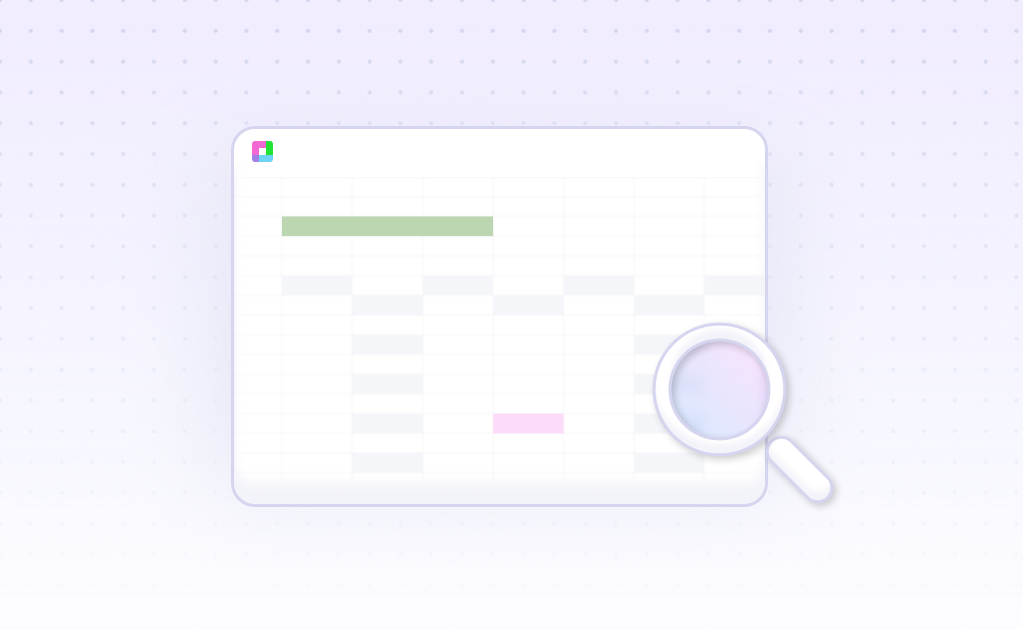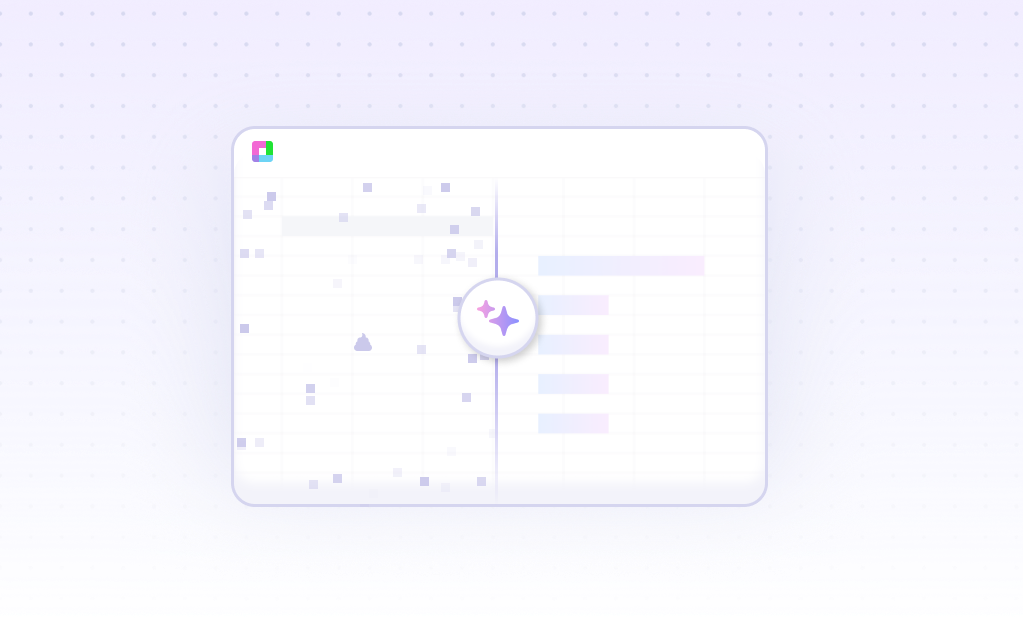
Quality Control That Actually Works
Remember the last time you caught a quality issue before it became a customer complaint? That feeling of relief, knowing your process control systems actually worked? Statistical Process Control (SPC) analysis is your early warning system for quality problems, and with Sourcetable's AI-powered tools, you can set up sophisticated SPC monitoring in minutes, not hours.
Whether you're monitoring manufacturing tolerances, service delivery times, or any measurable process, SPC analysis helps you distinguish between normal variation and genuine quality issues. It's the difference between panicking over every data point and confidently managing your processes.
Why SPC Analysis Transforms Quality Management
Statistical process control isn't just about drawing charts—it's about creating a proactive quality culture.
Early Problem Detection
Identify quality issues before they affect customers. Control charts reveal process shifts and trends that manual inspection might miss.
Automated Control Charts
Generate X-bar, R-charts, p-charts, and c-charts automatically. No more manual calculations or plotting—just upload your data and get instant insights.
Process Capability Analysis
Calculate Cp, Cpk, and other capability indices to understand how well your process meets specifications. Make data-driven decisions about process improvements.
Trend Analysis
Spot patterns and trends over time. Identify gradual process drift before it becomes a major quality issue.
Real-time Monitoring
Connect live data feeds and get instant alerts when processes go out of control. No more waiting for end-of-shift reports.
Compliance Reporting
Generate compliance reports for ISO 9001, automotive IATF, and other quality standards. Automated documentation for audits.
SPC Analysis in Action
See how different industries use statistical process control to maintain quality and reduce costs.
Manufacturing: Dimensional Control
A precision parts manufacturer monitors bearing diameter measurements using X-bar and R charts. When the process showed a gradual upward trend, they adjusted machine settings before producing out-of-spec parts, saving thousands in scrap costs.
Healthcare: Patient Wait Times
A medical clinic tracks patient wait times using control charts. They identified that Mondays consistently had higher variation and implemented targeted staffing changes, improving patient satisfaction scores by 15%.
Food Processing: Temperature Control
A food manufacturer monitors pasteurization temperatures with SPC charts. The system detected a slight temperature drift that could have compromised product safety, triggering immediate corrective action.
Call Center: Service Quality
A customer service center uses p-charts to monitor first-call resolution rates. They discovered that resolution rates dropped after lunch breaks and implemented focused training, improving performance by 12%.
Logistics: Delivery Performance
A shipping company tracks on-time delivery percentages using SPC analysis. They identified seasonal patterns and weather-related variations, allowing them to adjust schedules proactively.
Your SPC Analysis Workflow
From data collection to actionable insights in four simple steps.
Import Your Process Data
Upload measurement data from any source—CSV files, databases, or manual entry. Sourcetable automatically recognizes data patterns and suggests appropriate control chart types.
Configure Control Parameters
Set specification limits, subgroup sizes, and control limits. The AI assistant helps you choose the right parameters based on your data characteristics and industry standards.
Generate Control Charts
Watch as Sourcetable creates professional control charts with proper scaling, control limits, and statistical annotations. All calculations are automated and validated.
Monitor and Analyze
Identify out-of-control points, trends, and patterns. Get AI-powered insights about what the data means and recommended actions for process improvement.
Every Control Chart Type You Need
Choose the right chart for your data type and quality objectives.
X-bar and R Charts
Monitor process mean and variability for continuous data. Perfect for dimensional measurements, temperatures, and other variable data.
Individual and Moving Range (I-MR)
Track individual measurements when subgrouping isn't practical. Ideal for chemical batch data or infrequent measurements.
p-Charts (Proportion Defective)
Monitor defect rates and percentages. Perfect for tracking first-pass yields, customer complaints, or any proportional data.
c-Charts (Count of Defects)
Count defects per unit when sample sizes are constant. Great for tracking scratches, dents, or any countable defects.
u-Charts (Defects per Unit)
Monitor defect density when sample sizes vary. Perfect for tracking defects per square meter, per batch, or per time period.
Advanced SPC Capabilities
Go beyond basic control charts with sophisticated analysis tools.
Process Capability Studies
Calculate Cp, Cpk, Pp, and Ppk indices automatically. Understand your process capability relative to specifications with confidence intervals and recommendations.
Western Electric Rules
Automatically detect out-of-control conditions using all eight Western Electric rules. Catch process shifts, trends, and unusual patterns before they become problems.
Multi-variate Analysis
Monitor multiple quality characteristics simultaneously. Identify correlations between process variables and quality outcomes.
Seasonal Adjustment
Account for seasonal patterns and cyclical variations in your control charts. Perfect for processes affected by weather, holidays, or business cycles.
Statistical Process Control Questions
How do I know which control chart to use for my data?
The choice depends on your data type and measurement method. For continuous measurements like dimensions or temperatures, use X-bar and R charts. For attribute data like pass/fail or defect counts, use p-charts or c-charts. Sourcetable's AI assistant analyzes your data and recommends the most appropriate chart type automatically.
What sample size should I use for control charts?
For X-bar and R charts, subgroup sizes of 4-5 are typical, providing good sensitivity to process changes. For attribute charts, larger sample sizes (usually 50-100) provide more reliable statistics. The key is consistency—use the same subgroup size throughout your analysis.
How often should I update my control limits?
Control limits should be recalculated when you make intentional process changes, such as equipment upgrades or procedure modifications. Avoid recalculating limits simply because you have out-of-control points—this defeats the purpose of SPC. Generally, review limits quarterly or after significant process improvements.
Can I use SPC for service processes, not just manufacturing?
Absolutely! SPC works for any measurable process. Service industries use SPC to monitor call center performance, patient wait times, loan processing times, and customer satisfaction scores. The key is identifying measurable outputs that matter to your customers.
What's the difference between common cause and special cause variation?
Common cause variation is the natural, predictable variation inherent in any process. Special cause variation indicates something unusual has occurred—equipment malfunction, material change, or operator error. SPC helps you distinguish between the two, so you don't waste time investigating normal variation.
How do I handle processes that aren't normally distributed?
Many SPC techniques assume normal distribution, but real processes often aren't perfectly normal. For highly skewed data, consider data transformations or use alternative techniques like individual charts. Sourcetable can detect data distribution patterns and suggest appropriate analysis methods.
Can I automate SPC monitoring with real-time data?
Yes! Sourcetable can connect to live data sources and update control charts automatically. Set up alerts for out-of-control conditions, and your team will be notified immediately when processes require attention. This is especially valuable for continuous processes that run 24/7.
How do I present SPC results to management?
Focus on business impact rather than statistical details. Show how SPC prevents customer complaints, reduces scrap costs, or improves efficiency. Use capability indices to demonstrate process performance relative to specifications. Sourcetable generates executive-ready reports that highlight key findings and recommendations.
Your Quality Journey Starts Here
Statistical process control isn't just about creating charts—it's about building a culture of continuous improvement. When you can distinguish between normal variation and genuine problems, you stop wasting time investigating false alarms and start focusing on real improvements.
The best part? You don't need to be a statistician to get started. Sourcetable's AI assistant guides you through every step, from choosing the right chart type to interpreting results. It's like having a quality expert on your team, available 24/7.
Ready to transform your quality management? Start with your most critical process—the one that keeps you up at night worrying about customer complaints. Upload your data, let Sourcetable create your control charts, and watch as patterns emerge that you never noticed before.
Frequently Asked Questions
If your question is not covered here, you can contact our team.
Contact Us




